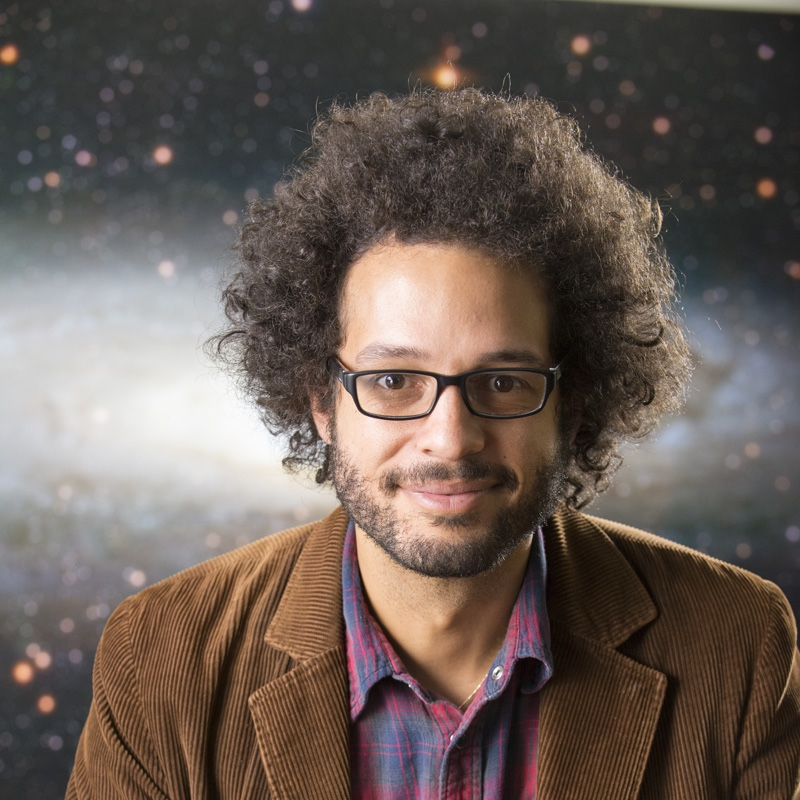Q&A: Paving A Path for AI in Physics Research
Brian Nord wants to build a self-driving telescope. The Fermilab astrophysicist envisions an instrument that, when presented with a hypothesis about the nature of the Universe, figures out the best observations to make on its own. He anticipates that it could take up to thirty years to understand and put together the project’s nuts and bolts. One known component is artificial intelligence (AI)—algorithms similar to those that underpin facial recognition software and nascent self-driving car technology.
Building toward his telescope dream, Nord has begun applying AI to problems in astronomy, such as identifying unusual astronomical objects known as gravitational lenses. His work, he hopes, will both further scientific research and help experts better understand the biases and errors that occur in these powerful new algorithms. He spoke to Physics about his recent projects and how he thinks AI, also known as machine learning, will change the way researchers do science.
–Sophia Chen
What are gravitational lenses, and why are they good candidates for machine learning techniques?
When light from one galaxy passes through another—a foreground galaxy—it gets distorted. The foreground galaxy acts like a gravitational lens, and the result is a funky, warped image of the original galaxy. We study lenses because they allow us to probe things like dark matter and the expansion rate of the Universe.
But galaxies rarely align along the line of sight like this, so finding a lens is like hunting for a needle in a huge haystack. When I was a postdoc, our team would spend dozens of hours per person scouring large swaths of the sky to identify lenses, often by eye. That process was very painful. So, I wondered, is there a better way?
An algorithm typically “learns” to identify objects by studying a set of prelabeled images, which it uses to build a model that can identify different objects. What images do you use to train your algorithms?
Our training images are simulations because astronomers have only ever identified 2000 lenses that distort light strongly enough for our studies, and that’s too few to train a machine learning algorithm. We make the simulations as realistic as possible. Then we take real images of individual galaxies from the sky catalog and ask the algorithm to determine if the image is a lens or not.
What has using AI in astronomy taught you about how the technique works?
It’s really hard to get interpretable error bars from a neural network—a common type of AI algorithm—to pin down the accuracy of our results.
If, for example, galaxy light is used to estimate another quantity, such as galaxy mass, the estimate acquires the errors of the original light measurement. If the original error is well understood, the output can be calibrated to account for that. However, we don’t yet know how to do this calibration with neural networks.
How do you study error?
Astronomical data is complicated. To understand error, my group is going back to basics and applying a neural network to a simple physical system like projectile motion. Imagine a sensor with both statistical and systematic errors that measures the trajectory of a projectile. Our plan is to simulate the output of such sensors with known measurement errors. Then we will study how the various steps in a neural network process the simulated error as the algorithm learns how to mathematically model the sensor. Once we understand uncertainty in this simple system, then we’ll go back to the astronomy data.
You’ve said that you don’t think that AI will replace scientists, but that it will disrupt what scientists do. Can you elaborate?
It’ll be like when we first started using computers. That happened before my time, but when scientists used to get a paper, they’d have to figure out how to get the data out of the plots. Now we can download the figures onto our computers and extract the data digitally.
AI is going to do something similar. Scientists will still have work to do, but it’ll be different work. Tasks like classifying images will be abstracted away. Maybe more of our time will be spent on hypothesis generation, because that’s hard for AI. A lot of us will also need to learn how these algorithms work so that we can interpret results.
You’ve also spoken about scientists’ ethical responsibility when it comes to machine learning algorithms. What does this responsibility mean for you, personally?
A neural network is only as good as the data it’s been trained on. If you give it data biased toward a particular thing, it’s going to think everything is that thing, regardless of whether the algorithm is looking at gravitational lenses or human faces. This fact is deeply concerning, given that AI applications like facial recognition look to become a fixture of society. For example, airlines such as JetBlue now use it as a replacement for boarding passes. In 2016, ProPublica published an article describing how the machine learning algorithms used to inform sentencing in the justice system can be biased against persons of color. By studying bias in a scientific context, maybe I could learn how to prevent those biases from occurring.
–Sophia Chen is a freelance writer based in Tucson, Arizona.
Know a physicist with a knack for explaining their research to others? Write to physics@aps.org. All interviews are edited for brevity and clarity.





